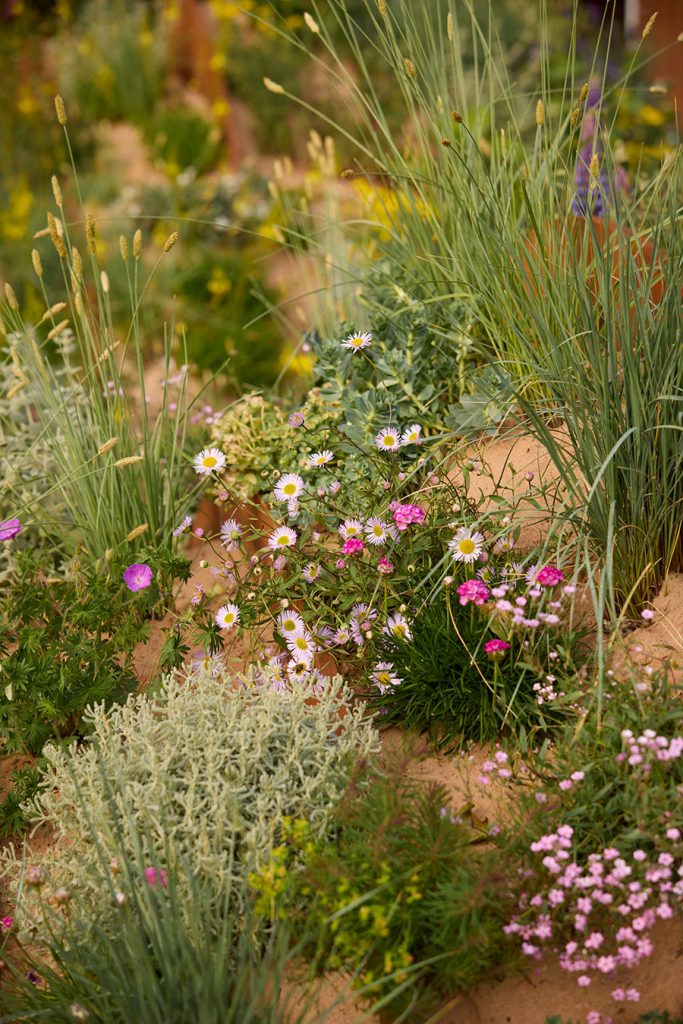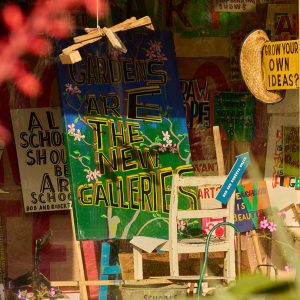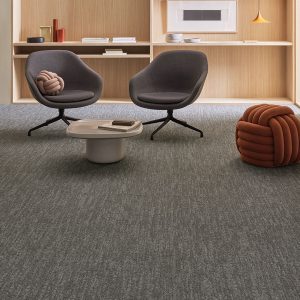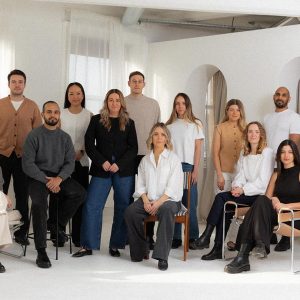
THE CHELSEA FLOWER SHOW (CFS) is a major landmark – probably the major landmark – in the UK garden lovers’ calendar.
It’s also one of the biggest London events for corporate hospitality, with tickets to the annual gala dinner going for nearly £800 a pop, and an estimated 10,000 glasses of champagne sold throughout its week, consumed by visitors, media, celebrities and corporate guests. But I have never been. And as gardening has become an ever-growing passion of mine, I was excited to be offered a chance to visit this year, as a guest of Hospitalfield, a delightful, 19th-century Arts and Crafts mansion in Arbroath that has an ambitious residential programme and inspiring gardens I have written about previously in FX’s pages.
Hospitalfield’s medieval walled gardens – remnants of an earlier monastery – were replanted in 2021 by garden designer Nigel Dunnett, and are now a key part of the historic house’s visitor appeal, enhanced by its remote, coastal location. It was Dunnett’s idea to bring something special to Chelsea, under the Hospitalfield banner, funded by Project Giving Back (the CFS’s charitable funding programme to see gardens re-used). Chelsea is the biggest opportunity for exposure for any gardener or horticulturalist, so the appeal for Dunnett was obvious. What was less obvious was the benefit to his client.

My first impressions, looking around the festival site, were not inauspicious. ‘It seems to be more about shopping and spending than plants and the environment,’ I grumbled inwardly, fighting through the crowds on streets lined with stalls advertising luxury outdoor furniture, designer trugs and trowels, and bespoke conservatories. The central marquee was a mosh pit of silver-haired ladies (and a few men) jostling to grab bargains: three for £12 on agapanthus plugs; elegantly packaged astrantias at £55 for a bagful (I suspect the local garden centre could have offered a better deal). Meanwhile, around the perimeter, the ‘Show Gardens’ held visitors at bay behind secure fencing. Instead of feeling buoyed by the company of fellow nature and plant lovers, I found myself wondering: what is the environmental impact of this annual exhibition? How can people who love plants and care about the planet justify shipping all this earth, these rocks, all the supporting structures, and these living blooms, all this way. Furthermore, afterwards, did they trash them or ship them back again?
But a moment of respite arrived as I landed at the Hospitalfield Arts Garden, designed to demonstrate the hardy plants that thrive on Scotland’s windswept east coast.
Their purple, pink and yellow blooms peppered the undulating mounds of sand, banked up with curving ‘ribs’ of what looked like Corten steel, but which turned out to be sustainably sourced timber, stained to look like Corten steel. Tucked away in the far corner was a small studio (supplied by The Bothy Project, a charity that provides bespoke studios in the landscape for arts residencies), adorned with artist Bob and Roberta Smith’s colourful placards, declaring ‘All Schools Should Be Art Schools’, and ‘Gardens Are The New Galleries’.
For Hospitalfield director Lucy Byatt, this moment in the London spotlight was about many things: first and foremost, it’s about amplifying what Hospitalfield was set up to deliver, when the house’s originator, artist Patrick Allan Fraser, left instructions on his death in 1902 for it to be used an art school and residency, giving artists time to develop their practice in a tranquil setting.
For Byatt, these residencies are a precious resource for artists at various points in their careers – most artists needing to juggle day jobs and families around their creative endeavours, with the latter usually taking a back seat. Says Byatt: ‘The residency becomes very important as punctuating their lives for moments of production, working things out. In these times, it is very difficult to achieve the support for those kinds of programmes. We’re not asking artists to perform or be engaged with audiences. It’s a vital aspect of our cultural lives to support practices at every level, so the work percolates through and eventually finds its way to our audiences. It’s really important to invest in residencies.’
Prior to joining Hospitalfield in 2012, Byatt directed Bristol’s now renowned Spike Island artist studio complex (2002-2008), devising and delivering a £2.25m capital development project that placed a major exhibition space at its centre, which then became the focus. She says: “Everyone became interested in the gallery, after which the residencies and research became less important… Whereas I wonder whether tucking a residency programme behind a magnificent garden is a way of dodging that. We’re creating something that works for our visitors and our audiences and means we are a public organisation through something that is very creative and with enormous common interest.’
That common interest includes weaving the community into the programme, with events encouraging creativity, outreach to local schools and colleges, as well as food growing. Byatt has steered a capital development programme at Hospitalfield around this balance between engaging visitors and nourishing artists, working to a 2015 masterplan devised and now delivered with architects Caruso St John. In 2021, a wonderful, glazed café extension and a fernery appeared, ensuring weatherproof enjoyment of the garden vistas for café customers all year round. Since then, improvements and renovations to the artist studios have been made.

Being at Chelsea has sparked lots of conversations, says Byatt, around the vital importance of arts education (there were many art teachers there, she says, who all agreed on its essential presence in our schools and lives), as well as sustainable gardening. Dunnett’s choice of plants, and the dune arrangement, demonstrates the importance of working with the soils you have and plants that thrive in that environment: a top layer of sand over a clay soil helps keep water in and improves drainage. Says Byatt: ‘Nigel is such an incredibly highly regarded horticulturist and Chelsea visitors were very interested in what he’s doing.’ One visitor, compiling a book of ‘the great gardens of Scotland’, has told Byatt Hospitalfield will now be listed, and so more visitors will come, and more income will be generated from café or shop sales, boosting the coffers that support the artists – which amounts to 70 residencies a year, at present.
But another important outcome of this Chelsea Show Garden is that the garden itself will return north, to Ladyloan Primary School, very close to Hospitalfield. Says Byatt: ‘The relocated garden will be adapted to create a stimulating space for children and teachers alike to enjoy their creativity and thrive.’
Now that won’t offsets the rocks shipped from Australia to Chelsea by one exhibitor, but it will definitely enrich the lives of that community.





